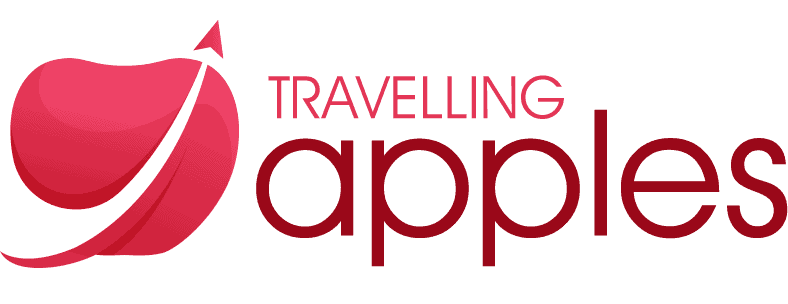 Moving to a new city is a major decision. Test a new city before committing to avoid regrets. Visiting first helps you assess your lifestyle and job opportunities. It allows you to explore the environment without making a permanent choice. This approach ensures the city aligns with your needs and goals. Testing the city gives you a clearer understanding of what daily life would be like. It also helps you avoid rushing into a decision. In the end, testing the city saves you from costly mistakes and stress.
Moving to a new city is a major decision. Test a new city before committing to avoid regrets. Visiting first helps you assess your lifestyle and job opportunities. It allows you to explore the environment without making a permanent choice. This approach ensures the city aligns with your needs and goals. Testing the city gives you a clearer understanding of what daily life would be like. It also helps you avoid rushing into a decision. In the end, testing the city saves you from costly mistakes and stress.
Key Factors to Evaluate
Evaluating a new city requires focusing on several factors that can affect your daily life. Nevertheless, not all cities are the same, and it’s important to assess specific aspects before committing. Here are some key areas to consider:
- Weather and climate conditions: Understand the city’s weather patterns to see if they match your preferences.
- Local job market and career opportunities: Research job availability and growth in your field to ensure career prospects.
- Cost of living: Examine housing costs, utilities, food prices, and daily expenses to determine if they fit your budget.
- Transportation and commuting infrastructure: Investigate the city’s public transportation options, traffic conditions, and overall ease of getting around.
How to Plan Your Test Visit
Planning a test visit to a new city requires careful preparation to make the most of your trip. For this reason, it’s important to do adequate research ahead of time to ensure you experience all the aspects that matter to you. Start by researching neighborhoods and determining which areas suit your lifestyle. Look into the cost of living in different parts of the city and check out available housing options. You might want to consider renting a unit during your trip to get a feel for daily life in a potential new home. It allows you to wander around without worrying about the safety of your belongings. Make sure your trip includes visits to workspaces, cafes, and parks to understand the atmosphere of the city. A well-planned visit helps you assess whether the city aligns with your needs.

Activities That Help You Decide
Getting a feel for the city involves more than just sightseeing. Focus on visiting different neighborhoods to see where you might want to live. Pay attention to the ambiance of each area, including its safety, accessibility, and amenities. Connecting with locals can also provide valuable insights about the city’s lifestyle. Talking to people at local events or public spaces gives you a deeper understanding of the community. Don’t hesitate to ask for advice on what to do and where to go. Attending local events like markets, festivals, or art shows is a great way to immerse yourself in the city’s culture. It helps you determine whether the city’s social life and activities align with your interests and values.
How Long Should You Stay?
The ideal length of stay when testing a new city depends on several factors. Then again, a visit that is too short might not provide enough information to make a clear decision. For a comprehensive evaluation, aim for at least one to two weeks. This duration allows you to explore various neighborhoods, check out housing options, and experience the local culture. The availability of accommodation should also influence your stay.
If you’re considering work opportunities, it’s helpful to visit during the week to assess the job market and network. Also, consider staying through a weekend to experience the city’s social scene. The time of year can impact your experience. A city might feel different in summer compared to winter, so it’s a good idea to test a new city before committing, during both peak and off-peak seasons. This ensures you fully understand the city’s atmosphere and if it fits your lifestyle long-term.

Test a New City Before Committing: How to Make a Decision?
While Reflecting on your visit, find time to assess how the city fits your lifestyle and goals. With this in mind, it’s time to evaluate your experience by considering whether the city aligns with your personal and professional needs. How did you feel about the lifestyle? Did the job market offer ample opportunities in your field? Were you able to manage daily routines, such as transportation and cost of living? If you feel confident about the city’s potential, it may be time to make the move.
However, if you still have doubts, you may want to explore other locations. Ultimately, the decision to move should come after carefully weighing these factors. It’s smart to consult professionals in the area you’re interested in. For instance, you can learn a lot about moving challenges and get insight into the areas you’re interested in on websites like Spyder Moving. A professional moving company that covers areas of Mississippi, Tennessee, Texas, and Colorado can be a treasure trove of information if you’re interested in one of these areas and could provide answers to the questions you wouldn’t think to ask yourself.
Wise Budgeting
Budgeting for your test visit is an important step to ensure you have a clear understanding of the costs involved. Above all, having a clear budget helps ensure your test visit goes smoothly. Start by breaking down the typical expenses you’ll encounter. Accommodation is often the largest cost, so look for affordable options such as short-term rentals or hostels. Transportation is another key expense, including local transit or car rentals. It’s helpful to research public transport options before arriving to get a better sense of pricing. Food and dining costs should also be factored in, as they can vary depending on where you eat.
To save money, consider cooking some of your meals or eating at local markets. Entertainment and activities can add up, so focus on low-cost or free events, like visiting parks or attending community events. You can explore the city by bike or on foot to cut down on transportation costs.

Conclusion
Taking the time to test a new city before committing is a smart way to make an informed decision about your future. By experiencing the city firsthand, you can assess everything from lifestyle to costs. This approach helps you avoid costly mistakes and ensures that the city you choose truly fits your long-term goals.
